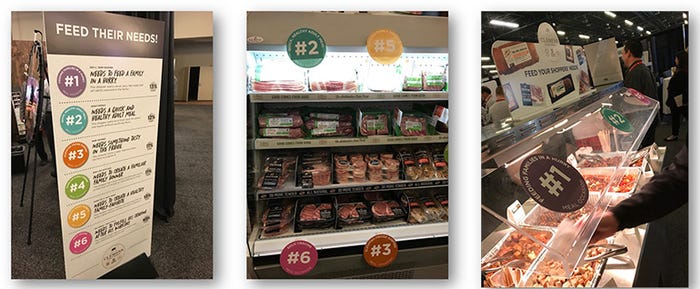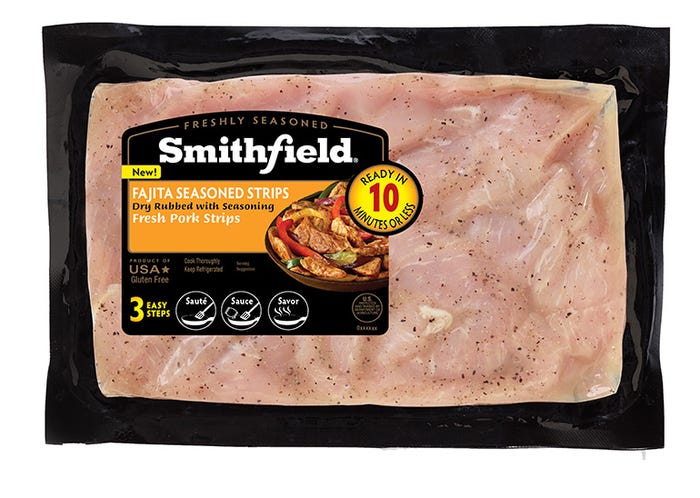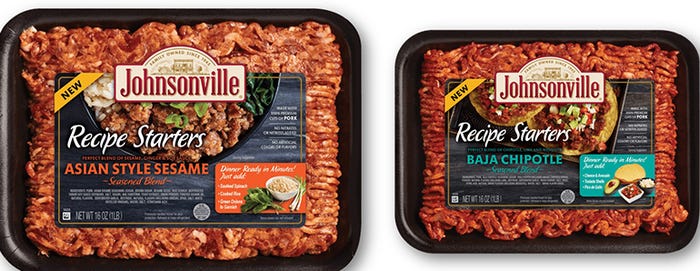Since the Dinner at Home in America report was released, several industry players have taken that insight and put it into action.

Sometimes after I have dinner ready for my family, I like to be nostalgic and yell out “soup’s on!” That’s the way my mom called our herd to the table growing up. I say herd, because I’m the youngest of 11. Looking back on those meals, I can’t even imagine the creative culinary skills my mother had to have to make sure there was enough food on the table. Cooking had to take up nearly half of her day.
While I try to serve my family a nice home-cooked meal a few nights a week, it’s by no means seven days a week. And I’m definitely not spending time slaving away in the kitchen. Instead, I’m often serving up suppers that are quick, easy and versatile.
According to the National Pork Board’s recent Dinner at Home in America report, I’m not alone. The research, which was released in January, combined 10,000 interviews with demographic and spending data to provide a comprehensive look at how U.S. consumers eat — a first-ever for the meat industry.
“What’s unique about this report is looking at how dinner at home or eating at home has changed from the need states,” says Jarrod Sutton, vice president of Domestic Marketing for the NPB. “We are not targeting a certain demographic. We are not looking at a metro area. It’s understanding how people are living differently and how that is influencing how they are shopping and eating differently.”
Altogether, the NPB uncovered nine unique dining occasions, or needs states, happening in homes on any given night of the week, ranging from solo dining to celebrating with extended family. During the course of any week, the same person can experience multiple eating occasions as their needs throughout the week change.
Since that report was released, several industry players have taken that insight and put it into action. As Sutton displayed during the meeting of the National Pork Board prior to Pork Forum, it’s not always about promoting pork, but more about finding solutions that meet those specific dining occasions.
During the recent North American Meating Institute Meat Conference (the trade show of the meat industry), Clemens Food Group set up a display that called out those nine eating occasions and then used that data to help build meat cases around those needs.

“The message is we’ve got to come at this differently as an industry,” Sutton says. “We need innovation to be relevant with today’s consumers as well as tomorrow’s consumers and here’s a great source to find the answers.”
Through their own data along with NPB’s report, Smithfield Foods has come out with flavored loin strips that can become a meal in three steps. According to Sutton, the response to the product at the NAMI Meat Conference was nothing but positive.

“Here’s the point, it’s not a 9-pound hunk of dead meat. There is still a market for that,” Sutton says. “But if you want to talk about taking steps out for the consumer, I see lots of products like this taking space in the meat case.”
For example, Johnsonville took out a step with their new ground pork products.

“It’s no call out for ground pork. We need to be thinking about positioning the way consumers are thinking about it. This is a recipe starter,” Sutton says.
It’s also important to recognize that today, pork is not necessarily the selling point for many consumers. It’s the convenience of the product. Sutton shares the Costco example, where they are now cutting the three-pack spare ribs, adding dry rub seasoning, wrapping as individual ribs and merchandising in the value-added deli case. The individual, dry-rub ribs are selling at a much faster rate than the traditional product.
“You have to know where the consumer is at and you have to know where they are headed. That’s how brands will continue to evolve and be relevant,” Sutton says. “We can put ground pork in the case, but building it and they will come attitude is yesterday’s market. You can still sell ground pork, but you have to position it differently, all driven through insights about how people are living and eating differently.”
It was refreshing to hear this newly released data didn’t go in one ear and out the other. It’s also great to see our industry one step ahead in the game.
I’m also personally looking forward to trying out some of these great new innovative products that meet some of my family’s dinner time needs. Who knows? Maybe the next time I yell “soup’s on,” it will be Johnsonville’s Baja Chipotle ground pork tacos.
About the Author(s)
You May Also Like





